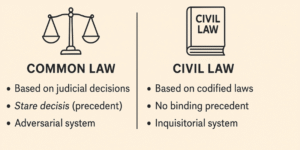There are few feelings more discouraging than being unseen or unheard in the workplace. In professional environments, where visibility often correlates with advancement opportunities, individuals who struggle to make their achievements known may find their contributions overlooked. The challenge lies in highlighting one’s accomplishments without appearing boastful. As Clark (2019) observes, effective communication, visibility, and relationship-building are central to being recognised and valued at work. This article explores practical strategies for professionals seeking to bring themselves to the attention of others while maintaining authenticity, humility, and professionalism.
1.0 Seek Opportunities to Contribute
Proactivity is a defining characteristic of visible and influential employees. One effective way to gain recognition is to volunteer for projects, committees, or tasks that align with one’s skills and interests. According to Jones and Jones (2018), employees who take initiative and seek opportunities to contribute beyond their formal roles demonstrate both commitment and leadership potential. For example, volunteering to lead a departmental project or participating in a cross-functional team can showcase problem-solving skills and reliability.
In organisational behaviour literature, Mullins (2020) highlights that discretionary effort—the willingness to go beyond job requirements—often leads to informal recognition from both peers and managers. By offering to take responsibility for challenging tasks or helping colleagues complete complex projects, employees can visibly add value and increase their influence within the team.
2.0 Share Your Successes with Confidence and Humility
Many professionals struggle to share their achievements for fear of being seen as arrogant. However, as Gordon (2017) asserts, self-promotion can be done gracefully when it is framed as a contribution to team success. Sharing updates on completed projects or positive client feedback not only informs others of one’s achievements but also reinforces the organisation’s collective success.
For instance, an employee who communicates, “I’m proud that our team increased client satisfaction by 15% this quarter,” acknowledges personal effort while highlighting collective contribution. This approach aligns with collaborative self-promotion, where achievements are shared in a way that uplifts others (Gordon, 2017). Furthermore, research by Grant and Parker (2009) on proactive work behaviour indicates that employees who openly share their accomplishments are more likely to be entrusted with high-visibility assignments.
3.0 Highlight Your Skills and Expertise
Making colleagues aware of one’s unique skills, specialisations, and expertise is a subtle yet powerful way to stay visible. Mullins (2020) suggests that communicating one’s capabilities builds organisational credibility—a key factor in professional reputation. Employees can share expertise by mentoring new staff, leading internal workshops, or contributing to professional development sessions.
For example, a data analyst might offer to train team members in using advanced visualisation tools, positioning themselves as a resourceful and knowledgeable team player. Similarly, according to Anderson (2018), internal communication platforms—such as intranet blogs, newsletters, or presentations—provide opportunities to share insights and showcase expertise across departments.
4.0 Participate Actively in Meetings and Discussions
Participation is a cornerstone of professional visibility. Brown and Brown (2019) argue that active participation in meetings not only demonstrates engagement but also establishes one’s voice within the organisation. By asking thoughtful questions, offering solutions, or supporting colleagues’ ideas, employees can show that they are analytical thinkers and collaborators.
A study by Edmondson (2018) on psychological safety in teams found that individuals who contribute regularly to discussions foster both trust and visibility. For instance, an employee who consistently offers evidence-based suggestions during strategy meetings is likely to be remembered as a critical thinker and reliable contributor. Even remote workers can achieve visibility by speaking up in virtual meetings or sharing insights through digital collaboration tools such as Microsoft Teams or Slack.
5.0 Build Relationships and Cultivate Trust
Professional relationships are the foundation of visibility. According to Smith (2016), strong interpersonal connections create pathways for informal advocacy and recognition. Engaging in casual conversations, attending social gatherings, and taking genuine interest in colleagues’ work humanises professional interactions and fosters trust.
In relational networking theory, Davis (2020) identifies that social capital—the network of relationships within an organisation—is essential for career advancement. Employees who nurture genuine connections often gain access to information, mentorship, and sponsorship. For example, a marketing executive who forms a strong relationship with a senior leader may receive informal career advice and visibility in high-level meetings.
6.0 Seek Feedback and Recognition
Requesting feedback from supervisors, mentors, and peers demonstrates self-awareness and growth orientation. Williams and Williams (2017) emphasise that constructive feedback provides valuable insights into one’s strengths and areas for improvement. Employees who seek feedback are often viewed as proactive learners.
Moreover, when positive recognition is received, expressing gratitude reinforces emotional intelligence and humility (Goleman, 2013). For instance, thanking a manager for acknowledging one’s performance can build goodwill and sustain future support. Sharing positive feedback publicly—such as through team updates or reports—can also help others recognise the employee’s consistent contributions.
7.0 Promote Your Work and Its Impact
Promotion of one’s work is not self-aggrandisement but strategic visibility. Anderson (2018) highlights that internal communication tools—such as newsletters, project reports, or departmental briefings—can effectively demonstrate the value and impact of an employee’s contributions.
For example, a project coordinator might circulate a brief report summarising how a new process improved efficiency by 10%. This approach focuses on outcomes and benefits, aligning self-promotion with organisational success. In a digital context, platforms like LinkedIn can also serve as professional spaces for sharing achievements, as long as the tone remains informative and professional (Taylor, 2019).
8.0 Network Strategically and Stay Visible
Networking is not merely social—it is strategic relationship management. Davis (2020) argues that building relationships with influential individuals helps employees access new opportunities and visibility. Mentorship and sponsorship relationships can be particularly transformative, as sponsors often advocate for their protégés in leadership discussions.
Remaining visible also means actively engaging in professional spaces, both online and offline. Attending conferences, webinars, and training sessions demonstrates commitment to professional growth. According to Taylor (2019), visibility in digital professional communities enhances credibility and broadens one’s influence beyond the immediate workplace.
9.0 Demonstrate Professionalism and Integrity
Finally, professionalism, consistency, and reliability underpin all forms of workplace visibility. Wilson (2021) stresses that professionalism extends beyond technical competence—it includes punctuality, accountability, and emotional maturity. Employees who consistently meet deadlines, collaborate respectfully, and maintain ethical standards naturally earn the trust and attention of others.
For instance, a team member who manages conflict constructively or supports colleagues under pressure embodies positive workplace citizenship (Organ, 2018). Over time, such behaviour becomes part of one’s professional identity and enhances visibility without deliberate self-promotion.
Bringing oneself to the attention of others in the workplace is a balanced process that blends competence, communication, and connection. The strategies outlined—seeking opportunities, sharing achievements, highlighting skills, engaging in discussions, building relationships, and maintaining professionalism—help create a sustainable and respected professional presence. As Clark (2019) summarises, visibility is not about self-promotion but about making meaningful contributions that others can recognise and value. By implementing these approaches, employees can ensure they are not only seen and heard but also appreciated for their authentic and impactful participation in the workplace.
References
Anderson, J. (2018). Effective Internal Communication. McGraw-Hill Education.
Brown, S. & Brown, M. (2019). Facilitating Group Discussions: A Handbook for School and Community Leaders. Routledge.
Clark, L. (2019). Communication in the Workplace. Pearson.
Davis, R. (2020). Strategic Networking for Career Advancement. HarperCollins.
Edmondson, A. (2018). The Fearless Organisation: Creating Psychological Safety in the Workplace for Learning, Innovation, and Growth. Wiley.
Goleman, D. (2013). Emotional Intelligence: Why It Can Matter More Than IQ. Bloomsbury.
Gordon, T. (2017). How to Talk So People Listen. Simon & Schuster.
Grant, A. & Parker, S. (2009). “Redesigning Work Design Theories: The Rise of Relational and Proactive Perspectives.” Academy of Management Annals, 3(1), 317–375.
Jones, A. & Jones, B. (2018). Volunteering in Organisations: A Guide to Maximising Your Impact. Oxford University Press.
Mullins, L. J. (2020). Management and Organisational Behaviour. Pearson.
Organ, D. W. (2018). Organisational Citizenship Behaviour: The Good Soldier Syndrome. Lexington Books.
Smith, M. (2016). Building Relationships for Success in Sales. McGraw-Hill Education.
Taylor, P. (2019). The Social Organism: A Radical Understanding of Social Media to Transform Your Business and Life. Hachette UK.
Williams, J. & Williams, S. (2017). Feedback That Works: How to Build and Deliver Your Message. Pfeiffer.
Wilson, C. (2021). Professionalism in the Workplace. Routledge.









